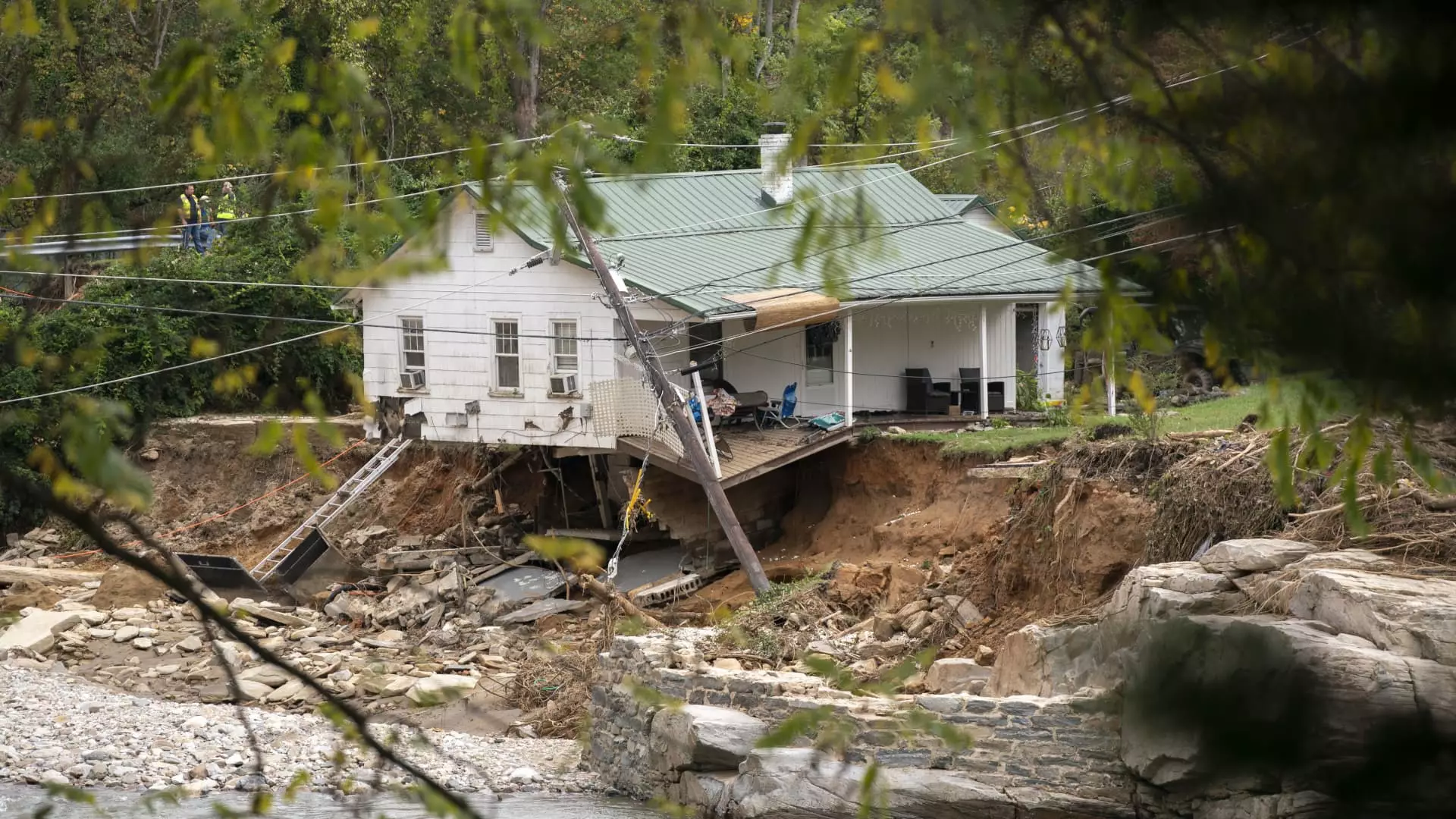Hurricane Helene has unveiled stark realities regarding climate-induced disasters, with insured losses currently estimated at over $6 billion. However, this figure only scratches the surface as uninsured losses climb significantly higher. The primary reason for this discrepancy is the widespread absence of flood insurance among homeowners in the hardest-hit regions, particularly North Carolina. The Federal Emergency Management Agency (FEMA) designates flood zones, and a startling 96% of homes in North Carolina fall outside these federally recognized boundaries. As a result, many homeowners remain unaware of their exposure to flood risks, often believing that because they are not in a designated area, they are safe.
The prevailing misconception that FEMA flood zone designations adequately reflect risk is deeply problematic. Only 4% of homes in North Carolina are officially classified within these zones, leading to an unreasonably optimistic view of flood susceptibility among homeowners. However, innovative risk-assessment technologies are beginning to bridge this knowledge gap. For instance, climate risk analytics provider First Street claims that almost 12% of homes across North Carolina are at risk of flooding when climate change impacts are factored in. This discrepancy highlights an urgent need for more comprehensive risk assessment adaptable to evolving conditions.
The launch of a new suite of climate risk data for real estate listings by First Street in collaboration with Zillow represents a significant step toward improved risk awareness. By embedding climate risk scores directly into property listings, prospective buyers can make more informed decisions. As Skylar Olsen, chief economist at Zillow, notes, the inclusion of such data enables buyers and sellers to engage meaningfully about climate-related factors, insurance considerations, and long-term cost assessments.
Each property listing now features detailed risk assessments that address not only current risks but also forecasted risks over the next 15 to 30 years—aligning with the typical mortgage durations. For properties deemed at risk of flooding today, there is a clear extrapolation indicating that such risks will likely increase in severity moving forward, highlighting the escalating nature of climate concerns.
Recent surveys reveal a marked increase in public concern regarding climate risks in real estate transactions. Over 80% of homebuyers now consider climate risk as a significant factor in their property search, with flooding emerging as the most pressing concern, closely followed by fire hazards. An analysis of housing listings has shown that a greater number of properties are listed with major climate risks than five years ago, indicating a troubling trend across all climate-related categories.
Zillow’s data shows that 16.7% of homes listed in August faced significant wildfire threats, while 12.8% were at a major risk of flooding. This growing awareness is reshaping consumer behavior and demand within the housing market. As prospective homeowners become increasingly discerning about climate risk information, the implications for home values cannot be understated.
As climate risk data becomes more integrated into home buying considerations, the real estate market is likely to face significant repercussions. One direct impact is the anticipated decline in home values in areas deemed at high risk for climate-related events. As the costs of insurance rise and the necessity for coverage becomes more evident, buyers may begin to shy away from properties associated with higher risks. This trend is evident not only in flood zones but also extends to regions at risk of wildfires and extreme weather phenomena.
In a statement, Ed Kearns, chief science officer at First Street, emphasized the critical importance of accurate risk assessment tools. He pointed out that relying solely on FEMA flood zone designations creates a false sense of security for many homeowners. The development and dissemination of new flood maps by organizations like First Street aim to empower consumers to make informed decisions regarding flood insurance, consequently enhancing overall market resilience against climate risks.
The ongoing dialogue about climate risk in real estate underscores a pivotal era for homeowners, buyers, and the industry at large. As natural disasters continue to escalate, the emergence of innovative climate risk technologies will be paramount in guiding homeowners to make informed choices, ultimately driving significant change within the housing market. Enhanced awareness of climate risks will not only alter buyer behavior but will also transform the economic landscape of real estate, necessitating a fundamental shift in how we assess property value and risk in the context of climate change.

